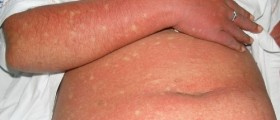
Introduction
A fever is always an indication of certain things in the human body that are out of the ordinary. Fever is usually very uncomfortable but it commonly is not especially dangerous unless it reaches 103 degrees. Slight elevations of temperature in children are usually a sign of some serious type of infection. The seriousness of the underlying condition that caused the fever in the first place is not always indicated by the degree of fever. Sometimes, certain minor illnesses can cause a high fever while in some other cases major ailments can cause low fever. Fever usually resolves on its own in a few days, but it can also be lowered by numerous over-the-counter medications. It is always recommended to leave the fever untreated since it is a way of fighting off an infection.
Causes
One’s normal body temperature actually varies during the day and it is usually lower in the morning and it gradually rises as the day progresses towards the evening. A normal body temperature is considered to be 98.6 degrees although in some people it may vary from 97 to 99 degrees. Heavy exercising and menstrual cycles can also affect one’s body temperature. The hypothalamus is located at the base of the brain and it sets one’s body temperature and acts as a thermostat for the human body.
One’s body temperature is actually a balance of the heat produced by the muscles and the liver and the heat that the human body loses. When a person is ill, the body temperature rises because the blood gets directed away from the skin in order to decrease the amount of heat that gets lost. When a fever kicks in, the patient commonly feels cold and shivers because the heat needs to be generated until the blood that surrounds the hypothalamus reaches a new point.
When the fever goes away the body temperature returns to normal and the person sweats excessively because the body needs to get rid of the accumulated excess heat. The body’s ability to produce fever is excessively lessened if a person is very old, very young or an alcoholic. Fever occurs as a response to a bacterial or a viral infection but it can also be associated with extreme sunburns, inflammations, heat exhaustion, malignant tumors and reactions to medications and immunizations. There are certain cases where it is impossible to determine the cause of a fever. Some cases involve febrile seizures.

















Your thoughts on this
Loading...